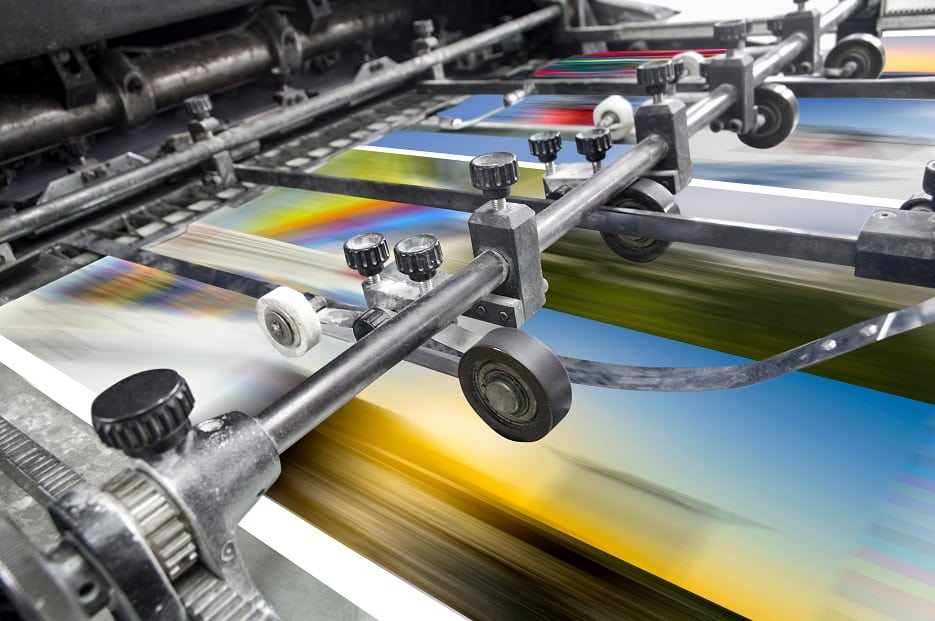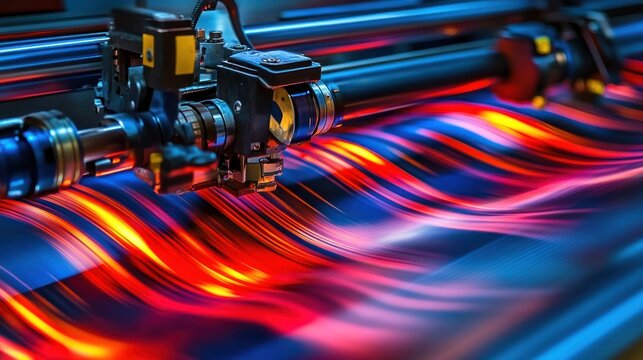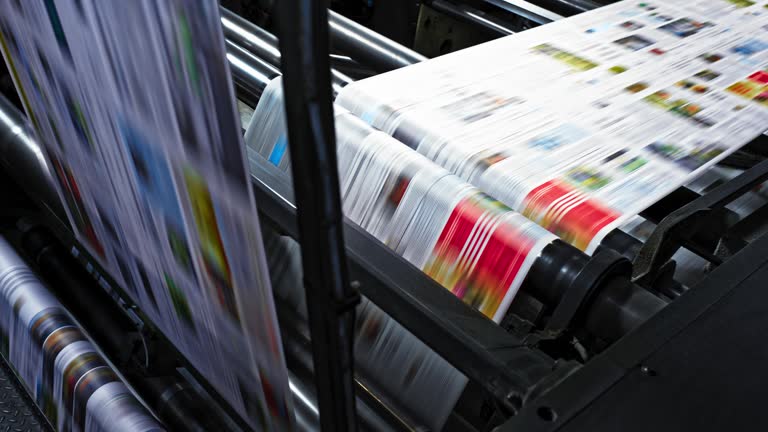Offset printing for banners is a widely used technique in the world of advertising and promotions. This method has proven to be remarkably effective for producing high-quality banners that capture attention and convey messages with clarity and impact. For business professionals seeking to elevate their marketing efforts, understanding the intricacies of offset printing can be a game-changer.
As businesses strive to stand out in a competitive market, the use of banners has become increasingly popular. Whether it’s for trade shows, storefront displays, or promotional events, banners serve as powerful tools for communication. Offset printing, with its ability to deliver vibrant colors and sharp details, is an ideal choice for producing banners that leave a lasting impression.

What is Offset Printing?
Offset printing is a traditional printing method that involves transferring ink from a plate to a rubber blanket, and then to the printing surface. This technique is known for its ability to produce consistent, high-quality images and is widely used for printing a variety of materials, including banners, brochures, and magazines.
How Does Offset Printing Work?
The process of offset printing begins with the creation of a metal plate that contains the image to be printed. This plate is then inked, and the inked image is transferred onto a rubber blanket. The rubber blanket, in turn, transfers the image onto the banner material, resulting in a crisp and vibrant print.
Advantages of Offset Printing for Banners
- High Quality: Offset printing is renowned for its ability to produce sharp, clear images with vibrant colors, making it ideal for banners.
- Cost-Effective for Large Runs: While the initial setup cost can be high, offset printing becomes more cost-effective as the print run increases, making it suitable for large quantities.
- Versatility: This method can be used on a variety of materials, allowing businesses to create banners that suit their specific needs.
- Consistency: Offset printing ensures consistent quality across all prints, which is crucial for maintaining brand integrity.
Choosing the Right Material for Offset Printed Banners
When it comes to creating banners using offset printing, choosing the right material is essential. The material not only affects the appearance of the banner but also its durability and suitability for different environments.
Common Materials Used in Offset Printed Banners
- Vinyl: Known for its durability and weather resistance, vinyl is a popular choice for outdoor banners.
- Fabric: Fabric banners offer a more elegant look and are often used for indoor displays and events.
- Paper: While less durable than vinyl or fabric, paper is a cost-effective option for short-term indoor use.
Offset Printing vs. Digital Printing
While offset printing is a popular choice for banners, it’s important to understand how it compares to digital printing. Each method has its own advantages and is suitable for different applications.
For a detailed comparison between these two printing methods, you can refer to this external resource.
Offset Printing: Best for Large Quantities
Offset printing shines when it comes to producing large quantities of high-quality prints. The initial setup cost is higher compared to digital printing, but the cost per print decreases significantly as the quantity increases, making it a cost-effective choice for large-scale projects.
Digital Printing: Flexibility and Speed
Digital printing, on the other hand, offers flexibility and speed. It’s ideal for small print runs and allows for quick turnaround times. Additionally, digital printing enables customization, making it suitable for personalized banners.
Steps to Create an Offset Printed Banner
Creating a banner using offset printing involves several steps, from design to production. Understanding these steps can help business professionals ensure their banners meet their expectations.
Step 1: Design
The first step in creating an offset printed banner is designing the artwork. This involves selecting colors, fonts, images, and layout to ensure the banner effectively communicates the intended message.
Step 2: Plate Creation
Once the design is finalized, a metal plate is created. This plate contains the image to be printed and is essential for transferring ink onto the banner material.
Step 3: Printing
During the printing process, the inked plate transfers the image onto a rubber blanket, which then transfers it onto the banner material. This results in a high-quality print with vibrant colors and sharp details.
Step 4: Finishing
After printing, the banner undergoes finishing processes such as cutting, hemming, and adding grommets for easy display. These finishing touches ensure the banner is ready for use.
Cost Considerations for Offset Printed Banners
When planning a banner project, it’s important to consider the cost factors involved in offset printing. While the initial setup cost can be higher than digital printing, the cost per unit decreases significantly with larger print runs.
For more information on offset printing setup costs, visit this resource.
Factors Affecting Cost
- Quantity: The more banners you print, the lower the cost per unit.
- Material: The choice of material can impact the overall cost, with vinyl typically being more expensive than paper.
- Design Complexity: Intricate designs may require more setup time, affecting the overall cost.
The Environmental Impact of Offset Printing
In today’s environmentally conscious world, understanding the environmental impact of printing methods is crucial. Offset printing has both positive and negative aspects in terms of its ecological footprint.
Positives
- Recyclable Materials: Many materials used in offset printing, such as paper and certain inks, are recyclable.
- Efficient Use of Resources: Offset printing can be highly efficient, particularly for large print runs, which reduces waste.
Negatives
- Chemical Use: The use of chemicals in plate-making and cleaning processes can have environmental implications.
- Energy Consumption: Offset printing requires significant energy, particularly during the plate-making and printing processes.
Maximizing the Impact of Your Banner
To ensure your banner makes a significant impact, it’s essential to consider factors such as design, placement, and messaging. These elements work together to capture attention and convey your message effectively.
Design Tips
- Bold Colors: Use bold colors to attract attention and create contrast.
- Clear Messaging: Ensure your message is concise and easy to read from a distance.
- High-Quality Images: Use high-resolution images to ensure clarity and detail.

FAQs on Offset Printing for Banners
What are the benefits of using offset printing for banners?
Offset printing offers high-quality prints with vibrant colors and sharp details. It’s cost-effective for large print runs and ensures consistency across all prints.
How does offset printing compare to digital printing?
While offset printing is ideal for large quantities and high-quality prints, digital printing offers flexibility, speed, and customization for smaller runs.
What materials are best for offset printed banners?
Common materials include vinyl for durability, fabric for elegance, and paper for cost-effective indoor use.
For more insights into printing methods, visit this article.
This article contains affiliate links. We may earn a commission at no extra cost to you.







